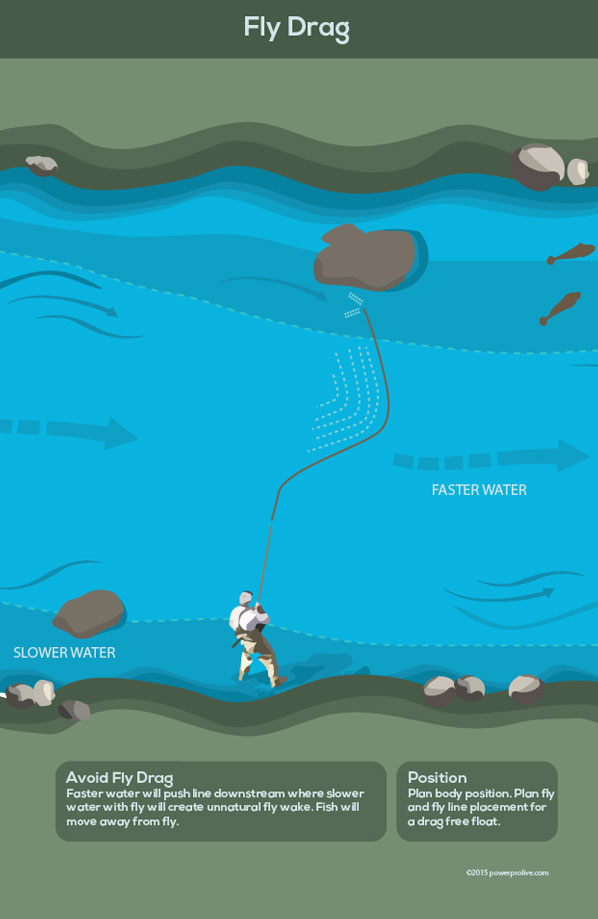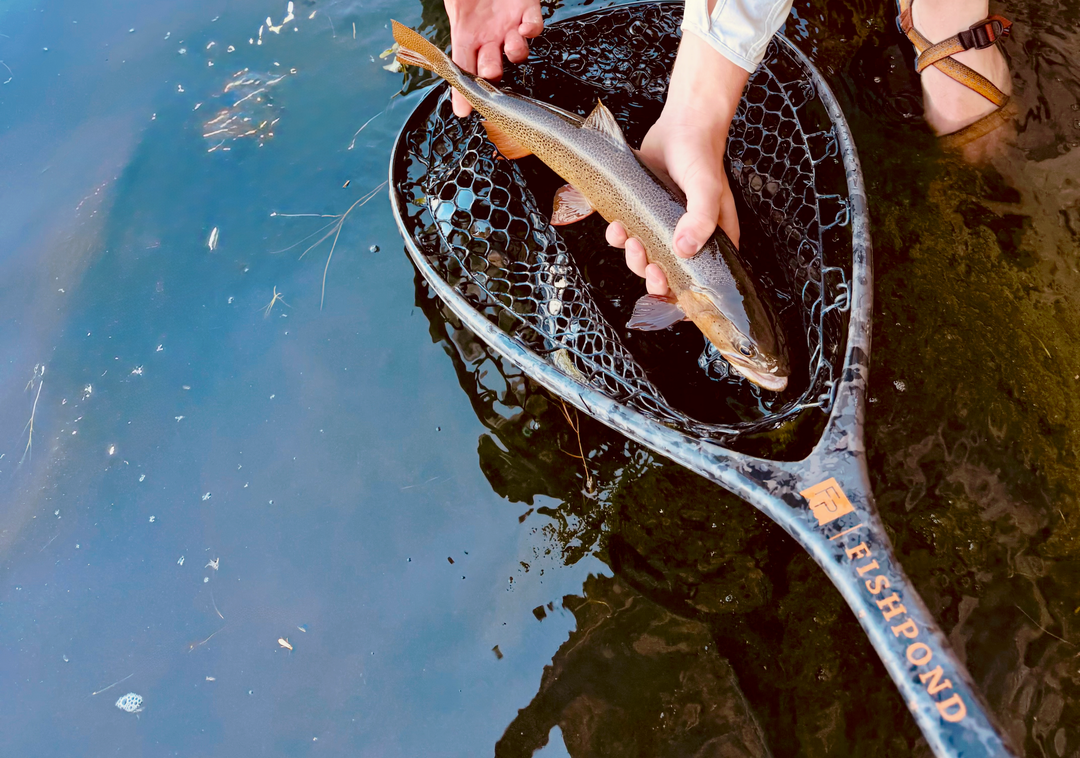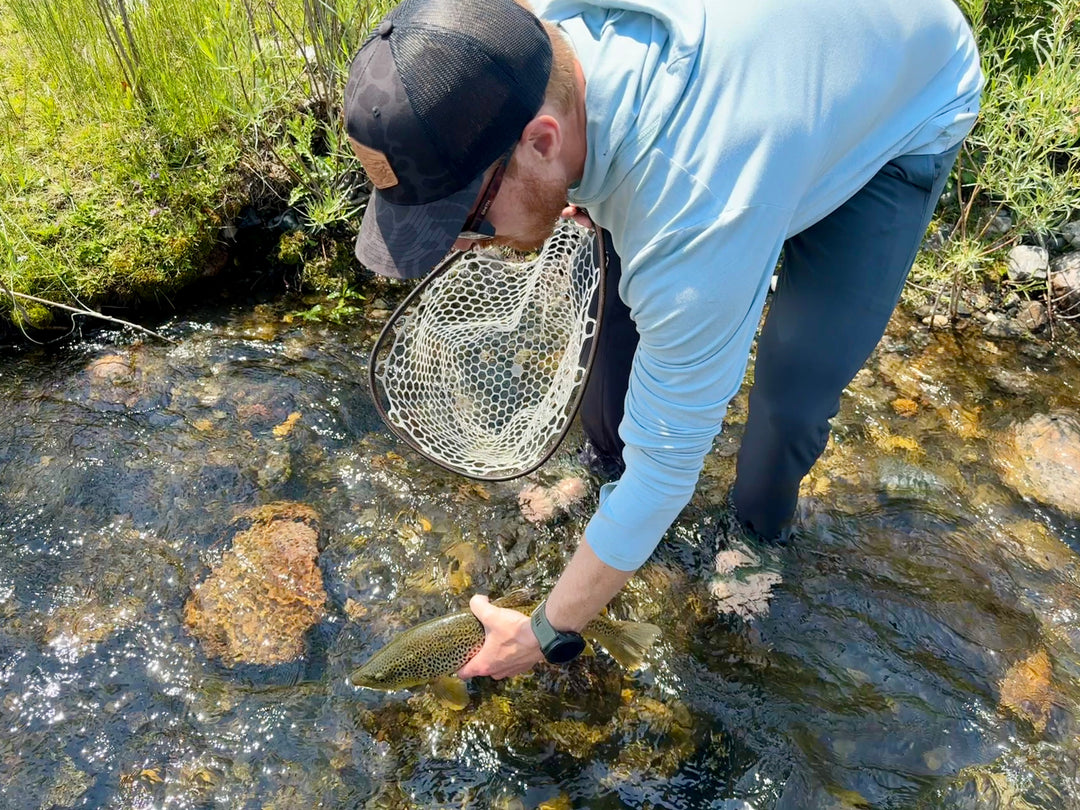The Best Fly Rods for Fishing from a Boat: What to Bring and Why (Part 1)

When people start fishing, they inevitably pick up their first fly rod, which more times than not is a 9-foot 5 weight. For walking wade, this does the bulk of everything they want to do the majority of the time. But as you start fishing more, getting more experience, and even start fishing out of a boat, you will start identifying the need for additional rods. The benefits of having different rods become increasingly more obvious the more you fish.
Your 5 weight can throw a wooly bugger and you can call it streamer fishing, but a 7wt with a heavier sinking line can deliver a variety of sizes and shapes when fishing streamers that your 5wt never could dream of and would struggle to give you much of an active retrieve.
A softer action 3 or 4 weight makes a much better dry fly rod than a super stiff fast action 5 weight, but where you are fishing from can make a difference and that faster action 5wt can be a better tool fishing out of a boat than your glass 4wt rod (Fast action rods flex minimally, allowing for higher line speeds and increased accuracy, making them suitable for various fishing conditions). One is a very specific tool designed to do a very specific thing, while the other is a more overall all-arounder. When you start fishing out of a boat, I think those variables become increasingly more apparent.
In this three part series, we’ll go over:
-
Why fishing from a drift boat or inflatable fishing boat is different than wade fishing
-
Why some of those rods that are great for wading aren’t the best for fishing out of a boat
-
Why you need multiple rods, and types of setups we’d recommend you have whether you have one rod or a dozen fly rods on the boat with you.
In the next articles we'll talk about what rods to bring and what rods you should bring depending on how many rods you have at your disposal!
Introduction to Boat Fishing
Fishing by boat is a popular method of fly fishing that allows anglers to cover a lot of water and target fish with a variety of methods. When it comes to boat fishing, having the right equipment and techniques is crucial for a successful day on the water. Whether you’re fishing from a inflatable raft, drift boat or a pontoon boat, understanding the fundamentals of boat fishing will help you catch more fish and have a more enjoyable experience.
One of the main advantages of boat fishing is the ability to access parts of the river that are difficult or impossible to reach on foot. This means you can target trout that are less pressured and more likely to eat a big crayfish with a less than perfect drift vs needing small nymphs with a perfect drift. Additionally, fishing out of a boat allows you to cover more water in a shorter amount of time, increasing your chances of finding active fish.
However, boat fishing also comes with its own set of challenges. Casting from a moving platform requires good balance and coordination. Putting the fly in the right position is crucial for a shot a good size trout, emphasizing skills in casting and precision. Wind, current, and obstacles like rocks and trees can all affect your ability to make accurate casts and get a good drift to that rising trout.
How Fly Fishing from a Boat is Different Than Wading

Most people think fishing out of a boat is pretty much the same thing as fishing on foot. In a lot of ways, it is very similar, but with added complexity like hitting a target while moving - an element that most people aren’t super familiar with when they’ve never fished out a boat before and are used to fishing from shore.
There are a couple of external factors to play into how challenging it can be fishing from a boat, such as distance, speed, wind, and drag. These are all aspects of fly fishing you have to deal with regardless if you're on foot or out of a $25,000 drift boat. How these factors impact your casting stroke or fly does change when you're in a boat and what the remainder of this article will cover.
Distance of Casts

A boat will presents a variety of different distances you’ll be casting from. It can depend on the size of the river, the skill of your rower, and the type of fishing you’re doing, whether that’s dry fly, streamer, or bobber fishing. Because most streams have structure and twists and turns, there are more elements to take into account versus standing in one spot and dissecting 20 ft.² of water for an hour.
Being able to cast from a variety of distances and in a variety of conditions becomes an important factor. You may be an incredible caster, but a three-weight slow action rod is not gonna be a great rod for the boat typically because it doesn’t have a ton of backbone to tackle a variety of different circumstances or fight the wind (one of the downsides of a boat is by being in the middle of the river, and in an elevated position, the wind becomes a much more prominent factor).
If you’ve been wade fishing and are just getting started in a boat, it would be helpful to go to a park or a parking lot and start practicing casting at various distances because sometimes you don’t have a lot to say in how far the distance is on each cast. That could be a very short cast close to the boat or a far cast that incorporates a reach cast to mitigate drag as best as possible. The better caster you are, the better you’ll be able to handle the variable distances you’ll experience from fishing from a boat.
Tip: When practicing casting focus on your back cast and trying to lay your fly line down with as few casting strokes as possible. I like practicing in a parking lot as the parking lines are great measured targets that can help you practice hitting specific distances. Most parking spots are 8-9' wide so in 3 consecutive casts: your first hits the line closest to you, the second 4' farther in the middle, and the third shot you aim for the far line. This helps you build accuracy and precision without needing to false cast (which tends to be a bad habit for most anglers).
Speed

Not all rivers are quick and fast moving some are very slow and glasslike (also called “frog water”), but in general fishing out of a boat is a faster pace than fishing from shore or standing in the river. When fishing from shore, you can make six or seven false cast to make sure that your fly lands exactly where you want to. From a boat you typically don’t get that luxury or your rower is gonna tear their rotator cuff trying to give you that type of a delay before you put the fly down (novel concept: flies 10' in the air don't hook fish in the water). You need to be aware that your target’s gonna come up faster and you need to be able to pick up line and throw it down quickly.
A good tip to help combat this is to always be "fishing the future." If the nose of the boat is pointed directly downstream with the bank parallel to you, the front angler will want to be fishing the 1 or 2 o'clock position, not the 3 or 4 o'clock position. By fishing the future, you’re constantly targeting rising fish downstream and setting yourself up for success because if you miss your first cast you may have enough time to quickly draw back the line and get another shot before you’re too far behind and you’re fly line gets dragged the moment the line lands. Fishing the future is critically important when fishing dries as well to give it a nice drag free drift.
A silly example to illustrate the point is playing pig in basketball verse a three-point contest with 10 seconds on the clock. Fishing out of a boat is more like the timed contest than it is playing pig where we have all the time in the world to pick and place your shots however you’d like. At first it can be a little bit frustrating but eventually you get to hang of it and it’ll just feel normal. This type of experience helps you become a better walk and wade angler as well.
A lot of people start gravitating towards faster action rods to be able to pick up and shoot line more quickly. Most rods seem to be falling in this category now a days it seems and they have a lot of benefits. Their high line speeds are particularly beneficial for quick casting in these scenarios. Additionally, having heavy rods can make a dramatic difference in handling windy conditions or larger flies when streamer fishing, ensuring you are well-prepared to quickly throw big flies to the biggest fish hiding in that hard to reach cover.
Wind

The wind can mess up anyone's casting stroke, but when you’re walking and wading and the wind is ripping, there are more tactics you can do to combat it or shield yourself from it. You can walk around on the bend, you can stand behind brush, you can lower your rod and limit the exposed rod to the wind by keeping your casts more parallel with the river than usual. In a boat you’re frequently at the mercy of the wind. This impacts the rods and how you fish two different ways.
The first way is to the person that’s actually fishing. Casting in the wind sucks. But it’s a part of the game and you’ve gotta learn to deal with it. If the breeze picks up and it feels like you're moving upstream sitting sitting down and putting the rod in the holder till it dies down can be a tempting relief. This can be a mistake as you can pull in some incredible trout because the river begins to have a little bit of chop in the water and the fish feel a little bit more protected from predators and they’re more willing to eat compared to when it’s glass clear on top.
If you’re trying to fish hoppers or ants in the peak of summer (peak fun), your 4 weight you love for walk and wading could easily collapse in the Wyoming wind, but a six weight is gonna have enough of a backbone to be able to get a strong back cast and then punch through the wind with a big foam fly - giving you a better chance of delivering that fly to more fish. I pretty much use a six weight anytime I’m fishing hoppers in Wyoming to deal with the dreaded W.
The second is the impact it has on the rower. The wind can have a serious impact on the rower and their ability to hold their line or even just keep the boat in the middle of the river. Why that matters for your choice in rods is your rower may not be able to keep the boat in the optimal position and instead of having to make a standard 15-20' cast you have to make a 30' cast with a headwind.
Drag
What is drag? Drag occurs when your fly line is moving faster than your fly, creating a "belly" that ends up pulling your fly across the water in a very unnatural way that almost ensures you won't get an eat. You combat drag by using your rod and rod tip to lift and flip your line upstream (this is called "mending") allowing your rig to float much more naturally.
Drag affects wade and boats anglers alike, but it tends to rear its head more prominently in wade fishing because the angler is in a fixed location. Whereas fishing out of a inflatable fishing boat you can still get drag but you can adjust the speed of the boat to compensate for drag. This is one of the reasons Guides love fishing out of a boat is because they can "control" their client's drifts and increase their odds of a hook up.
Montana Trout Wranglers has a great article on this with images (shown below)

When fishing on foot, if you mess up one of your drifts, it’s not really that big of a deal because you can just put another drift through the same section of water seconds later. When fishing out of a boat, getting a drag-free drift the first time is much more important. Again, you are moving with the water, so that nice-looking bank or submerged log or rock you may get one or two casts at, and then it’s gone and onto the next piece of structure.
Being able to cast and ensure you have a quality drift immediately improves your odds of catching fish as you float through miles of river. Anglers don’t get the luxury of throwing 30 drifts in front of a single fish out of a boat so making sure you put your fly in the correct location, give it a good drag free drift, and carefully watch to make sure you are fighting drag with upstream mends will help you tremendously in a boat.
Tip: An equipment change that can help you improve your drift is using a longer 10' rod. 9-foot rods are still the most common thing you’ll see, but to better help with mending and fighting drag, a lot of guides will opt for 5-weight 10-foot rods to give clients that extra bit of reach to make mending easier.
Better mends equal less drag, which equals better odds to hook a trout.
Choosing the Right Equipment for Your Trout Fishing

When it comes to fly fishing, having the right equipment can make all the difference between a successful day on the water and a frustrating one. For trout fishing out of a boat, a fast action rod isn't always the best bet, but it does offer important benefits. These rods allow for high line speeds and precise casting, which are crucial when you’re trying to hit that perfect spot where the fish are hiding. On the other hand, if you’re into dry fly fishing, you might prefer a slow action rod on calmer days. These can be the perfect rods to offer a more delicate presentation, which can be essential for fooling those wary trout.
Having the right rod for the right job is important and frequently the right rod is actually multiple rods. It’s not uncommon for seasoned anglers to have a dozen fly rods in their arsenal, each tailored for specific conditions or tactics. While this might seem excessive, having the right rod for the job can significantly improve your chances of success. When selecting a fly rod, consider the type of fishing you’ll be doing and the size of the fish you’re targeting. The weight and length of the rod are also important factors. For instance, a longer rod can help with mending and achieving a good drift, while a shorter rod might be easier to handle in tight spaces.
Materials matter too. Graphite rods are popular for their lightweight and responsive nature, making them ideal for fast action casting. This helps with throwing heavy streamers to the opposite bank in dirty water or getting the right fly to that small fish eating dries without a care in the world. The equipment you use impacts our abilities to fight the various distances, speeds, winds, and drag that come with anglers fishing out of a boat.
Stay tuned for Part 2 where we'll discuss what rod types we'd recommend and the type of rods you'll want rigged and ready in your boat.




